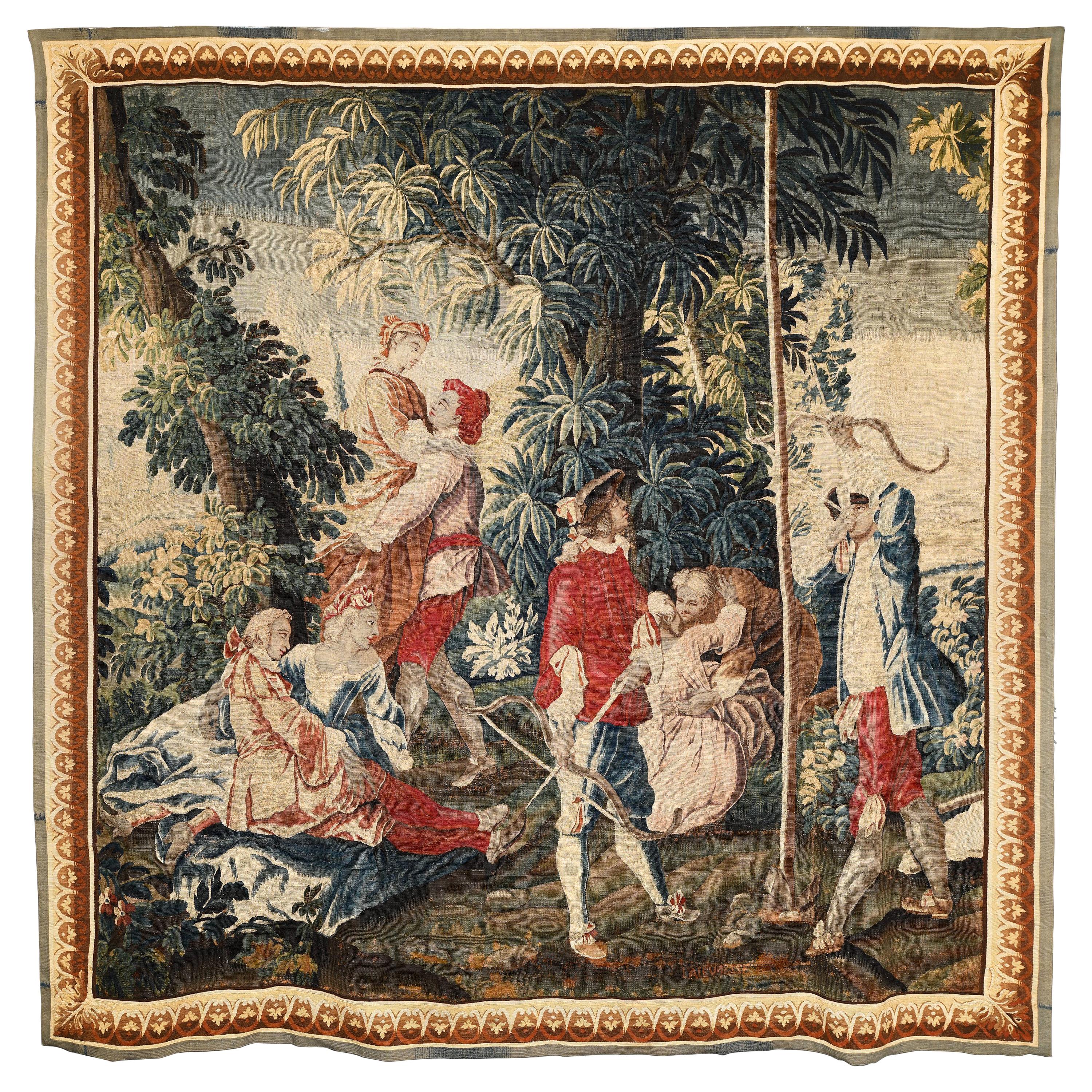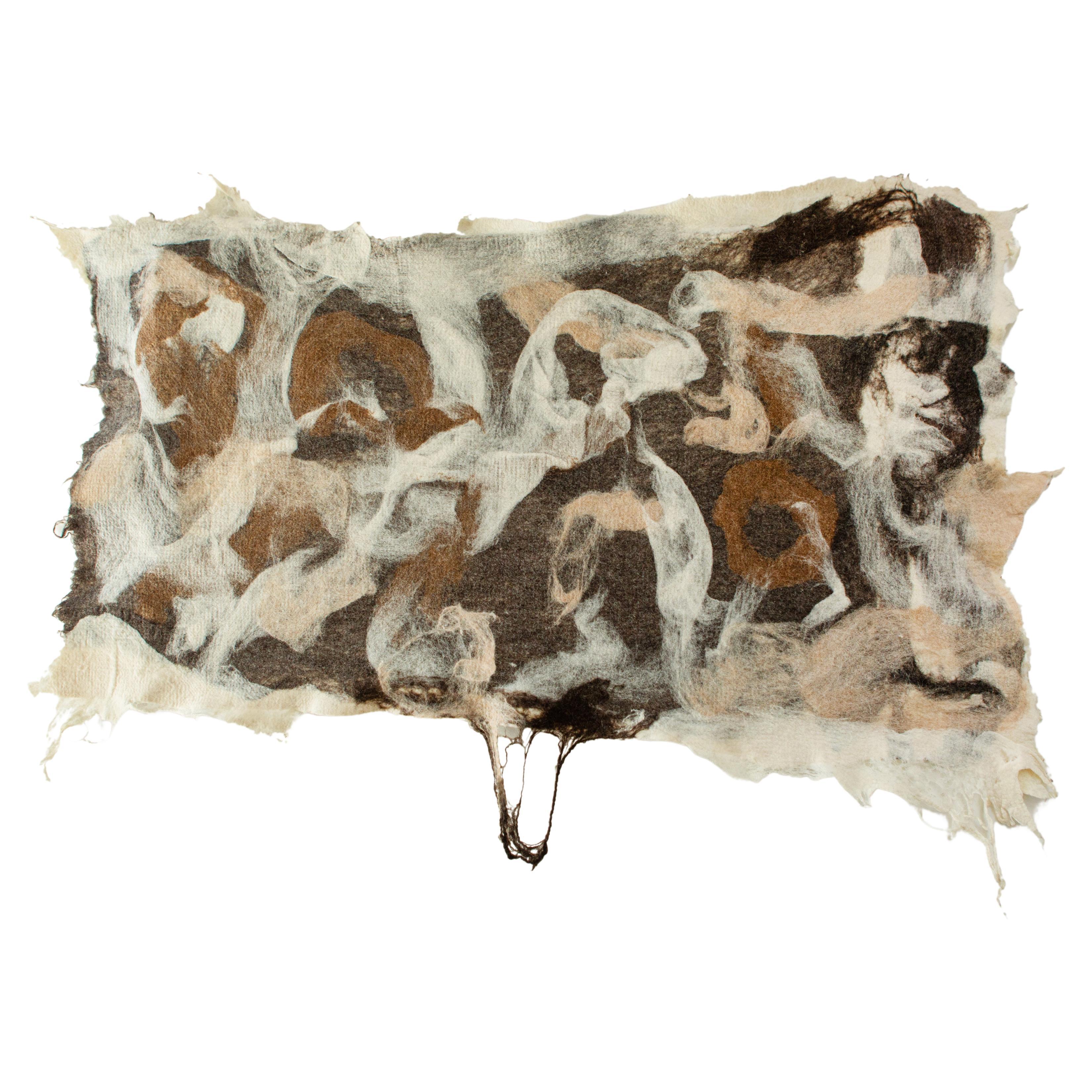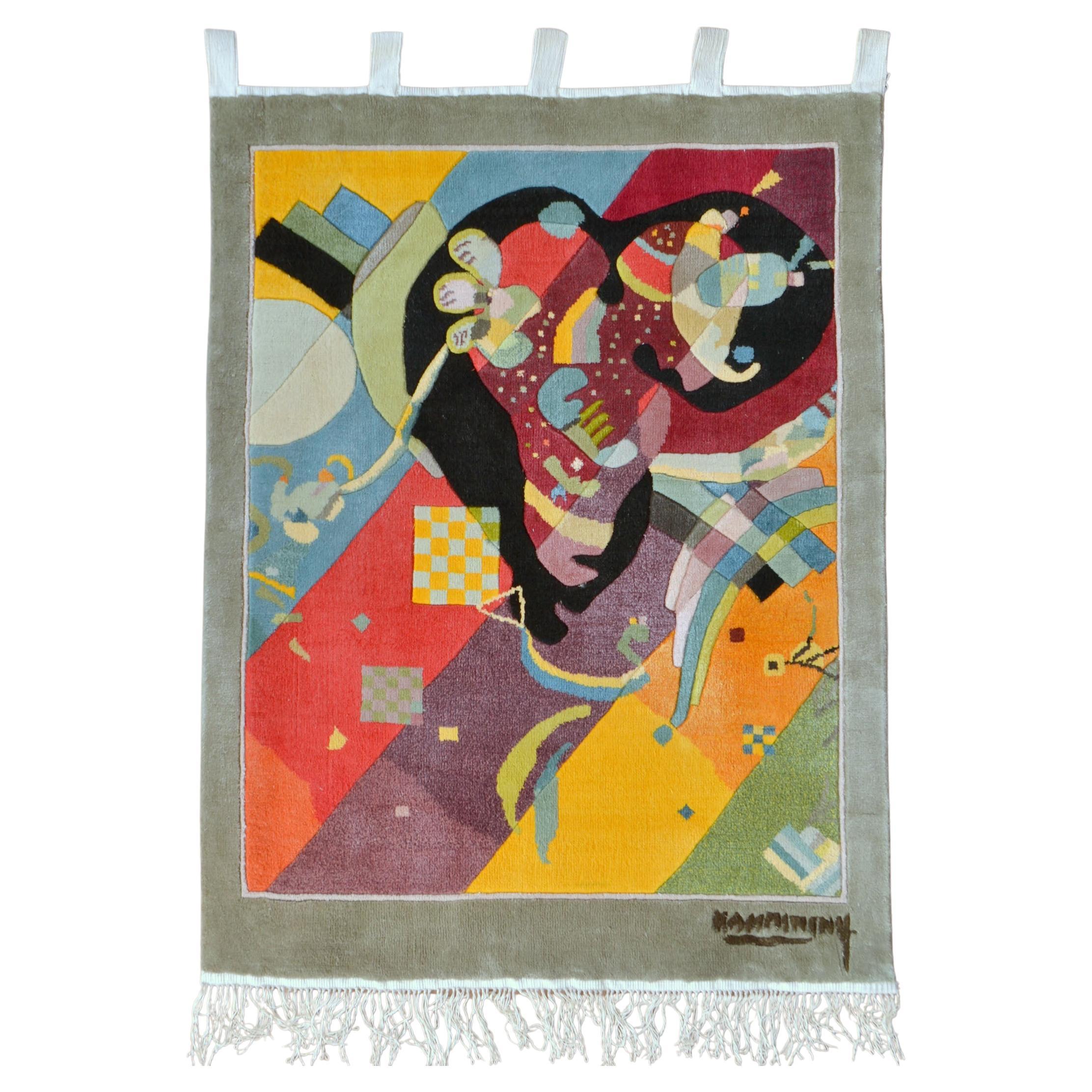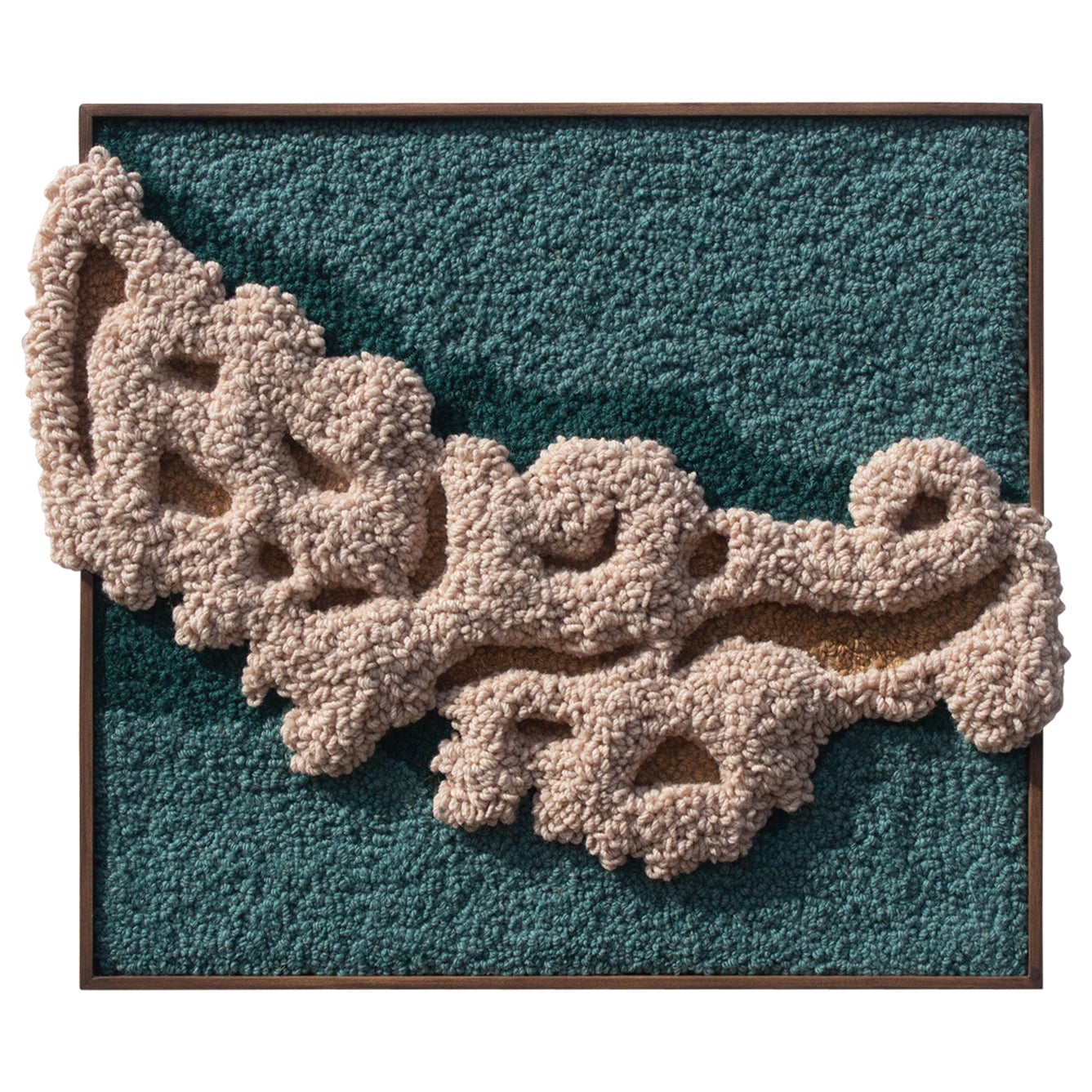Items Similar to Wool Wall Carpet "Autoportrait aux Poissons" by Pierre-Yves Trémois
Want more images or videos?
Request additional images or videos from the seller
1 of 6
Wool Wall Carpet "Autoportrait aux Poissons" by Pierre-Yves Trémois
About the Item
Wool wall carpet "autoportrait aux poissons" mechanical carpet by Pierre-Yves Trémois. Signed: Trémois
This is one edition of 49.
- Creator:Pierre-Yves Trémois (Artist)
- Dimensions:Height: 58.5 in (148.59 cm)Width: 76 in (193.04 cm)Depth: 1 in (2.54 cm)
- Materials and Techniques:
- Place of Origin:
- Period:
- Date of Manufacture:1970
- Condition:
- Seller Location:Montreal, CA
- Reference Number:1stDibs: LU875119815312
About the Seller
4.8
Recognized Seller
These prestigious sellers are industry leaders and represent the highest echelon for item quality and design.
Platinum Seller
These expertly vetted sellers are 1stDibs' most experienced sellers and are rated highest by our customers.
1stDibs seller since 2009
275 sales on 1stDibs
Typical response time: 1 hour
- ShippingRetrieving quote...Ships From: Montreal, Canada
- Return PolicyA return for this item may be initiated within 7 days of delivery.
More From This SellerView All
- Polychrome Acquatint Plate IV from Five Night Faces in Broadway by Karel AppelBy Karel AppelLocated in Montreal, QCPolychrome Acquatint and Carborundum Untitled (Plate IV from Five Night Faces in Broadway) by Karel Appel Signed: "Appel 75 E.A." for Artist Proof N...Category
Vintage 1970s Dutch Drawings
MaterialsPaper
- Colorful Oil on Canvas "Nature Morte Aux Fruits" by Claude VenardBy Claude VenardLocated in Montreal, QCClaude Venard, French painter (1913-1999).Colorful abstract cubist oil on Canvas "Nature Morte Aux Fruits ". Signed "C. Venard", label to the back May 9, 1989, lot 60 Provenance: Collection of Litsa Tsitsera, New York;, Christie's East, NY, May 9, 1989, lot 60, "Modern and Contemporary Paintings...Category
Vintage 1960s French Paintings
MaterialsCanvas
- Whimsical Gilt Lead Dove Lamp by Pierre CasenoveBy Pierre CasenoveLocated in Montreal, QCWhimsical gilt bronze dove lamp by Pierre Casenove for Fondica.Category
Vintage 1970s French Table Lamps
MaterialsLead
- Snake Skin Covered Coffee Table after a Design by Pierre LegrainLocated in Montreal, QCCoffee table after a design by Pierre Legrain, the snake skin covered top resting on Macassar ebony and nickel-plated base.Category
20th Century French Coffee and Cocktail Tables
MaterialsMetal
- Elmwood Circular Dining Table Model T21D by Pierre ChapoBy Pierre ChapoLocated in Montreal, QCElmwood circular dining Table model T21D by Pierre Chapo. After the war, he passed the entrance exam to the Beaux Arts de Paris in architecture. The classics, Greeks, Romans, the Ba...Category
Vintage 1960s French Dining Room Tables
MaterialsElm
- Set of 4 Elm Curved Benches Model S38 by Pierre ChapoBy Pierre ChapoLocated in Montreal, QCSet of four curved elm benches model S38 by Pierre Chapo.Category
Vintage 1960s French Benches
MaterialsElm
You May Also Like
- 18th Century French Wool and Silk Aubusson Tapestry and Engraving, circa 1750By Aubusson ManufactureLocated in Milano, ITLa Jeunesse (Youth) Tapestry Polychrome wool and silk France, Aubusson, circa 1750 It measures 107.08 in height x 104.33 in (272 cm height x 265 cm). State of conservation: good The tapestry is accompanied by the engraving from which the subject was taken. The engraving measures 23.50 in x 25.86 in (59.7 cm x 65.7 cm) with the frame. The Aubusson tapestry has controversial origins: some believe that it was the Saracens who imported this type of work into Europe while other authors believe that the production began at the same time as the marriage between Louis I of Bourbon and Maria de Hainaut in 1310. It was at this time that a considerable importation of tapestries from Flanders into France began, followed shortly thereafter by the importation of their production techniques. At the beginning of the seventeenth century a royal edict from Henry IV halted the importation of Flemish tapestries, contributing to the subsequent Expansion of Aubusson production. The status of royal manufacture was to be granted only in 1665, even though the Nantes edict caused a drop in production because of the forced migration of weavers to Germany. The full recovery and the success of the manufacturing took place during the eighteenth century when the great painters and the tapestry manufacturers began to collaborate. Great French artists of the time and specialist painters, the “cartonniers”, painted “cartons de tapisserie” in oil or tempera, all of which were to be a source for the tapestries. As an alternative to the “cartons”, scenes taken from prints and engravings were freely used. The tapestry in question, made of wool and silk, is in good condition; the colors are still fresh and the silks, which give brightness to the scene, are well preserved. There are a small number of integrative restorations present, while the lining and the suspension system have been recently refurbished. The work is made with a flat-weave, according to the custom of the Aubusson manufactures, which is clearly demonstrated by this work since it shows all the technical and material characteristics typical of the first half of the eighteenth-century production: the “Jeunesse” was probably woven in the middle of the XVIII century. The scene itself is compelling: a rural clearing is depicted, centered around a tall tree with dense fronds with lance-shaped leaves. In the shade of this tree some scenes of courtship can be seen. A couple hugs each other, one is caught stealing a kiss and another, lying softly on the grass, is still at the early stages of courtship: together with the suitor the girl looks with smiling malice at the kissing couple. On the right, two young men practice archery while aiming at a target placed on top of a pole. The scene, with male and female characters intent on games and gallantry in a festive atmosphere, is taken - faithfully, but in mirror-image - from an engraving, which in turn was itself taken from the painting (now kept at the National Gallery in London, inv. NG103 and part of a series with the four ages of man) by Nicolas Lancret, produced around 1735. The tapestry is accompanied by a copy of the engraving, which bears, at the bottom, the name of the author (“N. Lancret pinxit”), the name of the engraver (“N. De Larmessin sculpsit”) and four short verses on the subject of love disputes: Pourquoi tous ces combats si chers a la jeunesse, Quels frivoles talents veut-elle mettre au jour? Non: chacun voudroit vaincre aux yeux de sa Maitresse, La Lice est une Scène ou triomphe l’Amour. Why all these fights so dear to youth, What frivolous talents does it want to bring to light? No: everyone would want to win in the eyes of his Mistress, The Lice is a Scene where Love triumphs. At the bottom we read: “A’ Paris chez N. De Larmessin graveur du Roy Rue de Noyer à la 4 (?) porte cochère a droite entrant par la Rue St. Jacques A.P.D.R. [Avec Privilège Du Roy]”. Nicolas Lancret (1690-1743), along with Antoine Watteau, was a pupil of Pierre Durin and Claude Gillot...Category
Antique Mid-18th Century French Rococo Tapestries
MaterialsTapestry, Wool, Silk
- 19th Century, English Needlework SamplerLocated in Bedfordshire, GBA very interesting early 19th century needlework sampler depecting 'Solomons Temple' housed in its original rosewood frame.Category
Antique Early 19th Century English Regency Tapestries
MaterialsRosewood
- Wall Hanging Trio Designed by Pierre Olofsson, Sweden, 1960sBy Pierre OlofssonLocated in Stockholm, SEWall hanging Trio designed by Pierre Olofsson, Sweden. 1960's. Handprinted cotton velvet. Measurements: H: 125 cm/ 4' 1'' W: 165 cm/ 5' 5''Category
Vintage 1960s Swedish Scandinavian Modern Tapestries
MaterialsCotton, Velvet
- Felted Wool Wall Art by Jg Switzer, Alpaca & Mixed WoolBy JG SwitzerLocated in Sebastopol, CAUntitled Alpaca & Mixed Wool Painted by wool artist JG, this piece is felted of undyed, raw fleece from Shetland sheep in darker moorit brown, light brown and grey with merino and an apricot pink alpaca fleece glazed over the canvas of wool. This piece is a painterly rendering of entirely undyed fleece on a canvas of locally sourced wool. The raw, living edges...Category
2010s American Tapestries
MaterialsWool
- Kandinsky Silk Woven Wall Tapestry by Carpet Weavers AssociationBy Wassily KandinskyLocated in London, GBHand-knotted tapestry after design Wassily Kandinsky, second half of the 20th century. This is a beautiful work of art by a master artist is woven in silk on cotton, with a dense pile, is made by Carpet Weaver's Association. This hand woven tapestry is an interpretation of Kandinsky’s 1920...Category
Late 20th Century European Expressionist Contemporary Art
MaterialsCotton, Silk
- Handmade Wool Wall Tapestry, Contemporary Landscape, Wall Art, Nature by OhxojaBy Estudio OHXOJALocated in Almada, PTHandmade using tufting technique and 100% Portuguese wool yarn with anti-moth treatment. The bass-relief is carved with scissors, creating different heights and a textured based landscape. The frame is designed and produced by the studio, made with pine wood, brings elegance to this artwork and warmth to your home. This piece represents an aerial landscape view of river reeds. Estudio OHXOJA is a Portuguese textile art studio, based in Costa da Caparica, a small beach paradise near Lisbon, that seeks to have an original approach inspired by the sea and nature. Catarina Cruz and Tiago Amaral, self-taught textile artists, manually produce contemporary tapestries in Portuguese wool, for the wall or the floor using various techniques, from punch needle...Category
2010s Portuguese Tapestries
MaterialsWool, Pine
Recently Viewed
View AllMore Ways To Browse
Poisson Vintage
Pierre Yves Tremois
Leleu Watercolour
Blass Sport By Bill Blass
Willy Boers
Vintage Sunflower Sunset
Tiffany Fargo
Tiffany Tennis Ball Can
Dora Maar On Sale
Leonard Reedy
Vic Fair On Sale
Pencil Drawing Of A Chateau In A Landscape
Avel Deknight
Besler Sunflowers
Christine Sundberg
Mattia Traverso
Paul Chidlaw
William Ridenhour





